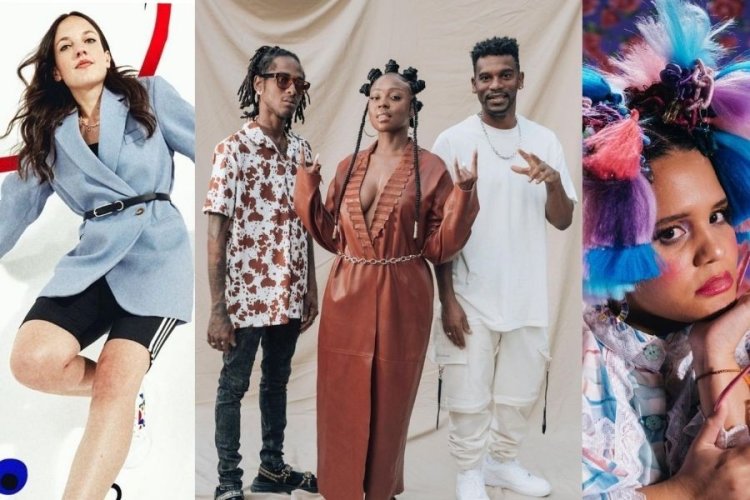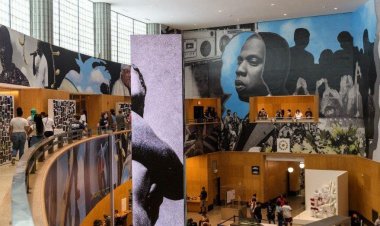Pop Pulse How Global Culture Is Shaping the Future

How Social Media Is Driving Pop Culture Trends
Social media has reshaped how pop culture spreads around the globe. Platforms like YouTube, Instagram, and TikTok give anyone with an internet connection access to the latest music, dance crazes, memes, and more.

Trends spread fast
On social media, pop culture phenomena can go viral seemingly overnight. A catchy song, dance challenge, or meme might start as a grassroots trend, gaining momentum as more and more people share it across platforms. Before you know it, that viral internet thing has become a mainstream pop culture sensation.
Take “Old Town Road” for example. Lil Nas X originally posted his song on TikTok, where fans made short lip-sync and dance videos set to the tune. The song went viral, leading to a record deal and over 4 billion YouTube views. TikTok helped turn “Old Town Road” into 2019’s defining pop anthem.
FOMO drives participation
No one wants to miss out on the latest pop culture trend. The fear of missing out, or FOMO, compels people to participate in viral challenges, watch buzzy shows, and stream hit songs so they can join the conversation. This cycle perpetuates pop culture phenomena, as more participation leads to greater visibility and hype.
Pop culture has always spread through word-of-mouth, but social media amplifies this effect. When friends, influencers, and even strangers on the internet are all talking about the same movies, music, memes, or viral crazes, you feel like you should be in on it too. Thanks to this digital word-of-mouth and the power of FOMO, social media will continue shaping pop culture trends for years to come.
The Globalization of Entertainment: K-Pop, Anime and More
The increasing globalization of entertainment means the rise of foreign pop cultures influencing mainstream audiences worldwide. Two of the biggest examples are K-pop and anime.
The K-Pop Phenomenon
K-pop, or Korean pop music, has become a global sensation. K-pop groups like BTS, Blackpink, and Twice have gained international fame, amassing huge global fandoms and breaking records. K-pop’s polished and fashionable style, impressive dance moves, and catchy music have resonated with youth around the world.
The K-pop industry is also highly manufactured. Talent agencies recruit and train singers and dancers from a young age to become K-pop stars. This manufactured nature and focus on visuals and performance has led to criticisms. However, K-pop’s global rise shows no signs of slowing. The genre continues to push into new markets, gain new fans, and influence pop culture.
The Anime and Manga Boom
Anime and manga, Japanese animation and comics, have also become more popular globally. Anime like Pokémon, Naruto, and Attack on Titan have transcended niche audiences to become mainstream pop culture icons familiar even to those who don’t watch anime.
Streaming services have made anime and manga more accessible worldwide. Fans can now easily watch subbed or dubbed versions of the latest shows. Anime’s fantastical stories, emotional depth, and unique visual style have resonated with audiences globally.
Like K-pop, the anime and manga industry is highly manufactured in Japan. But also like K-pop, anime and manga have still found widespread global appeal and continue to shape pop culture worldwide. These foreign pop cultures are a sign of an increasingly globalized and connected world. They show how entertainment from one part of the world can influence audiences everywhere.
Predicting the Next Big Thing in Pop Culture
Trying to predict the next big thing in popular culture is like trying to catch lightning in a bottle. Pop culture moves fast, and what’s hot today may be forgotten tomorrow. However, a few indicators can help us spot trends on the rise.
Look to the youth. Teenage and young adult tastes often shape mainstream pop culture. Pay attention to the music, fashion, TV shows, and celebrities gaining traction on platforms like TikTok, Instagram, and YouTube. The things teens are into today, everyone may be into next year.
Monitor the charts. The music, movies, TV shows, books, and influencers topping the charts often signify a growing trend. For example, the rise of Korean pop music (K-pop) and cinema in the U.S. was foreshadowed by the success of “Gangnam Style” and the movie Parasite. Success builds upon itself.
Follow the money. See where businesses and investors are putting their money. The products and services they bet on, especially those targeting younger consumers, often tap into emerging trends. For instance, the boom in plant-based meat alternatives was fueled in part by major investments in companies like Beyond Meat and Impossible Foods.
Pay attention to nostalgia cycles. Pop culture tends to be cyclical, recycling the styles, sounds, and properties of previous decades. About every 20 to 30 years, the pop culture of our youth comes back into fashion in some form. The recent revivals of ‘80s and ‘90s fashion, music, movies, and TV shows are a prime example.
While predicting pop culture is an imperfect science, these signposts can help spot the next viral song, trendy tech, or must-see movie before it blows up big. The forces that shape global culture are constantly changing, but some themes remain the same. Staying alert to the interests of youth, the charts, business moves, and nostalgia will tune you into the pop culture rhythms of today and tomorrow.

 Admin
Admin 








